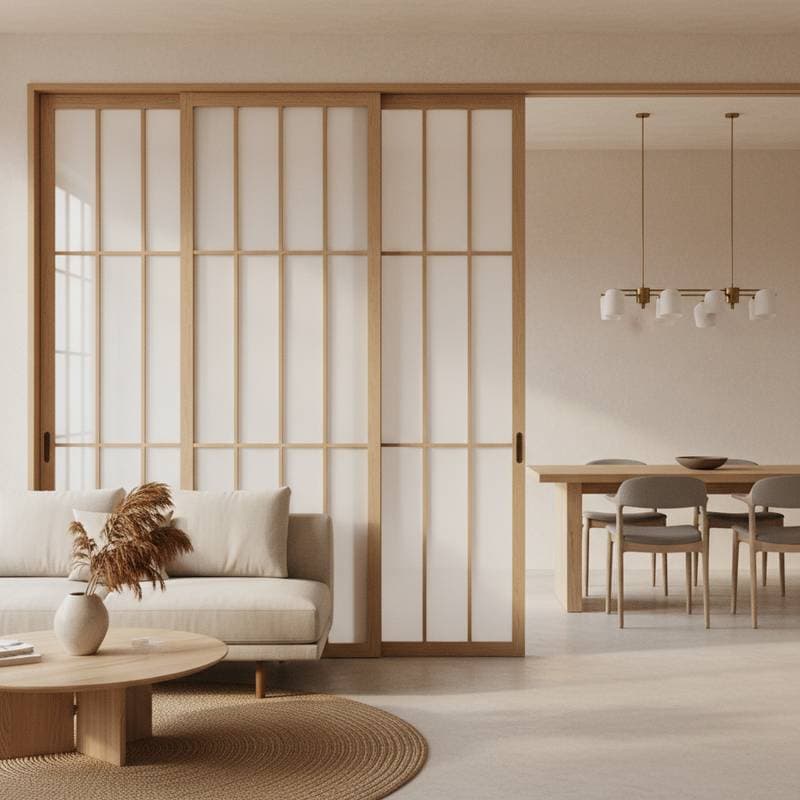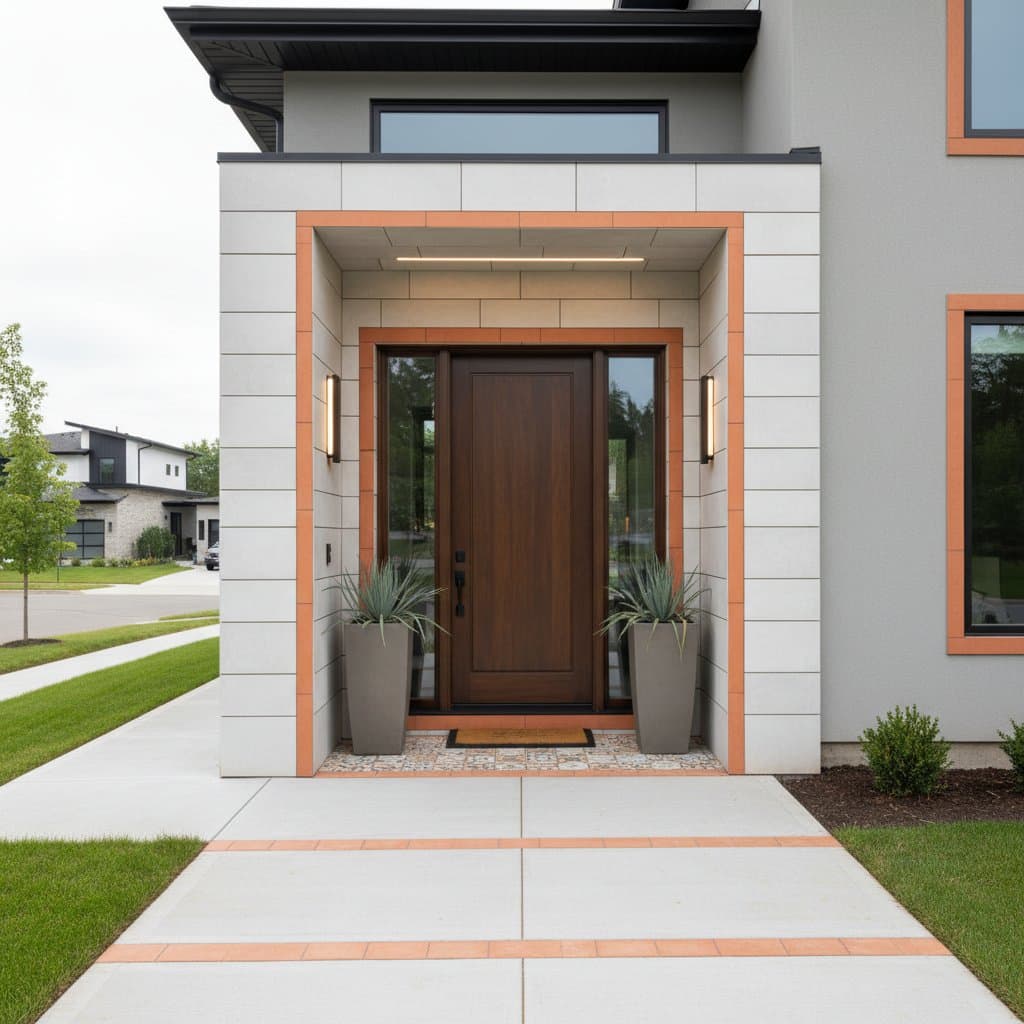Japanese Barn Doors: Swap Swing for Space-Saving Style
Interior doors influence the feel and functionality of a home in subtle ways. Traditional swinging doors dominate many spaces, yet homeowners increasingly seek options that preserve floor area, enhance movement, and introduce distinctive design. Japanese-style barn doors draw inspiration from shoji sliding panels, blending the reliable mechanics of barn doors with the balanced lines and cultural essence of Japanese design. This combination yields a practical solution that elevates both utility and visual appeal.
What Sets Japanese Barn Doors Apart
Japanese barn doors stand out from standard sliding barn doors through their lighter profile and thoughtful aesthetics. They often feature slender wood frames paired with translucent inserts or simple panels that evoke traditional Japanese interiors. Unlike the robust wood slabs and prominent hardware of Western barn doors, these versions emphasize harmony, precise proportions, and understated details. The outcome is a door that integrates seamlessly without overwhelming the room.
Beyond aesthetics, practicality drives their popularity. These doors glide along an overhead track, eliminating the swing radius that encroaches on floor space. In compact homes, apartments, or layouts with minimal clearance, this feature proves invaluable for maintaining open pathways.
Materials and Design Options
Japanese barn doors offer diverse materials, each bringing unique benefits:
- Wood frames with paper or acrylic panels: This traditional style diffuses light softly, replicating the glow of shoji screens. Acrylic ensures longevity while preserving the delicate appearance.
- Solid wood panels: Ideal for enhanced privacy or a bolder statement, these allow customization of grain patterns and finishes to complement existing decor.
- Glass panels framed in wood: A contemporary twist, using clear or frosted glass to maximize natural light while supporting smooth sliding operation.
Hardware selections shape the overall aesthetic. Opt for sleek tracks and pulls to align with Japanese minimalism, or incorporate subtle industrial elements for a blended modern look.
Japanese Barn Doors Versus Other Door Types
Comparing Japanese barn doors to swinging doors and classic barn doors clarifies their advantages.
| Option | Initial Cost | Lifespan | Maintenance | Best For |
|---|---|---|---|---|
| Swing Door | Lower | Long with upkeep | Hinge adjustments, repainting | Rooms with generous clearance |
| Traditional Barn Door | Moderate to high | Long with care | Track lubrication, alignment | Rustic or farmhouse settings |
| Japanese Barn Door | Moderate | Long with attention | Panel cleaning, track inspections | Compact areas, minimalist designs |
This table illustrates how Japanese barn doors strike a balance between cost, durability, and space efficiency that surpasses basic swinging doors.
Installing Japanese Barn Doors: A Step-by-Step Guide
Initial Planning and Assessment
Start by measuring the door opening and adjacent wall area. Ensure ample wall space exists on one side for full door retraction. Evaluate ceiling height, as the track demands adequate overhead room for secure mounting.
Preparation Essentials
Choose a track system suited to the door's weight and select reinforcement if the wall lacks structural support. Assemble all parts beforehand: track, rollers, handles, and bumpers. Verify compatibility with your chosen materials to avoid complications.
Core Installation Process
Secure the track directly above the opening, ensuring level alignment. Attach rollers to the top of the door panel. Hoist the door onto the track, adjust for even gliding, and install handles that prioritize both ease of use and visual harmony.
Final Checks and Adjustments
Test the door for fluid movement without binds or instability. Confirm bumpers prevent over-sliding. For panels with glass or translucent elements, examine edges for damage and verify precise alignment.
Ongoing Maintenance Practices
Maintain performance by wiping tracks free of dust, inspecting rollers periodically for wear, and cleaning surfaces based on material. Handle paper or acrylic gently to prevent tears; refinish wood as needed to sustain its appearance.
Integrating Japanese Barn Doors into Daily Life
These doors extend beyond space conservation to shape room dynamics. Their sliding action fosters fluid transitions, making confined spaces feel more expansive. Translucent options permit light to permeate, blurring boundaries gently and amplifying illumination throughout the home.
Consider privacy levels carefully. Solid wood or frosted glass delivers robust seclusion, whereas semi-transparent panels create a softer partition. Evaluate needs for families, shared living, or home offices to match sound and sight barriers accordingly.
Durability and Long-Term Planning
Assess material resilience during selection. Lightweight panels demand careful handling compared to heavier alternatives. In homes with active children or pets, prioritize robust woods or reinforced glass to withstand daily demands. Plan for panel replacements, which may involve more effort than simple touch-ups on conventional doors.
Selecting the Ideal Japanese Barn Door
- Address space constraints: Sliding designs excel in areas where swing doors intrude.
- Align with style preferences: Embrace them for their serene lines, diffused lighting, and subtle cultural nod.
- Balance privacy requirements: Select opaque panels for isolation, semi-clear for moderation, or transparent for connectivity.
- Account for home activity: Choose durable variants if frequent use or impacts are likely.
Professional Guidance for Success
Engage contractors experienced in sliding systems to review structural needs, material choices, and finishes. For DIY efforts, enlist a helper for safe lifting and precise leveling. This preparation ensures a flawless outcome.
Achieving Enduring Performance
The true value of Japanese barn doors resides in their dual role as functional assets and design highlights. Regular testing of the glide mechanism, prompt hardware cleaning, and early intervention on small problems preserve both efficiency and elegance over time.






